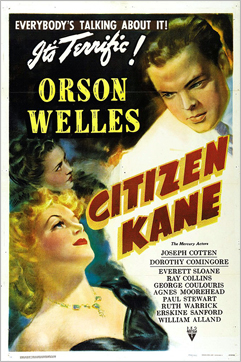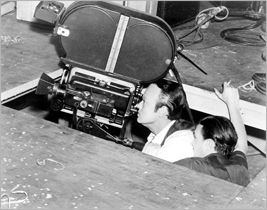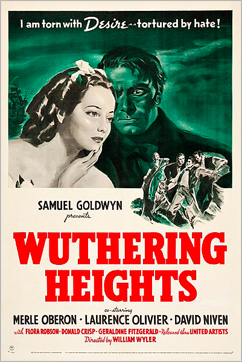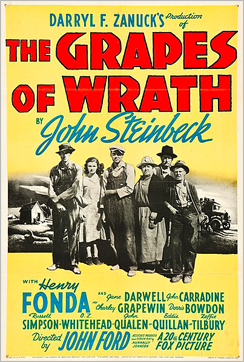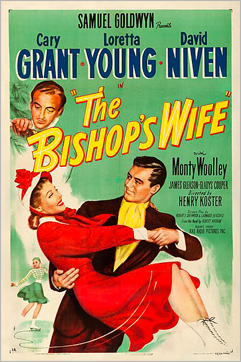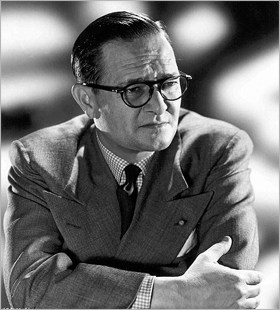SPOTLIGHT
GREGG TOLAND...CINEMATOGRAPHER
Text By Douglas Schwartz

All content in this SPOTLIGHT © copyright the respective artists. All rights reserved.
As the story goes, Welles admired Toland's cinematography so much on another superb film...
The Grapes of Wrath...that he wanted, and managed to get, Toland to be the cinematographer
on his upcoming directorial and acting film debut about a man by the name of Charles Foster
Kane. This wise choice on Welles' part would result in a collaboration that would include the
following, rather famous, film production decision.
Most artists will probably agree that they must occasionally (some might say frequently) break
the rules when it comes to creating their art. Toland and Welles did precisely that when they
very likely broke an RKO Pictures studio rule by cutting through and removing a portion of the
soundstage floor in order to get the low-angle shot they wanted. Oh well. The way I see it...in
the big scheme of things...what the hell! Floors can be fixed. Art comes first!
The Grapes of Wrath...that he wanted, and managed to get, Toland to be the cinematographer
on his upcoming directorial and acting film debut about a man by the name of Charles Foster
Kane. This wise choice on Welles' part would result in a collaboration that would include the
following, rather famous, film production decision.
Most artists will probably agree that they must occasionally (some might say frequently) break
the rules when it comes to creating their art. Toland and Welles did precisely that when they
very likely broke an RKO Pictures studio rule by cutting through and removing a portion of the
soundstage floor in order to get the low-angle shot they wanted. Oh well. The way I see it...in
the big scheme of things...what the hell! Floors can be fixed. Art comes first!
The shooting script for an unknown film (at that time) calls for a series of exterior nighttime shots of
a dark and foreboding mansion. These exterior shots conclude with a close-up of a window as a
light is extinguished, symbolizing that something important is about to occur within the mansion.
The script then calls for the camera to cut to a succession of interior shots that culminate with an
extreme close-up of a man's mouth as he utters a single word...Rosebud. The camera then
focuses on a close-up of a handheld snow globe as it is dropped to the floor and shatters into
many pieces.
So begins the opening of Citizen Kane (1941)...a motion picture that is now regarded as one of
the greatest of all time. If you are one of the few people in the world who has never seen it, I won't
spoil the meaning behind that mysterious spoken word. Suffice it to say that the entire story centers
on unraveling that secret...an answer to which is given at the conclusion of the film.
The innovative look of this masterpiece goes to a cinematographer by the name of Gregg Toland...
an artist whose creative lighting, camera angle, and trademark style of deep-focus (extreme depth
of field) used in Citizen Kane, as well as other films, is recognizable by anyone who appreciates
excellence behind a camera. Apparently, Orson Welles was one such fan.
a dark and foreboding mansion. These exterior shots conclude with a close-up of a window as a
light is extinguished, symbolizing that something important is about to occur within the mansion.
The script then calls for the camera to cut to a succession of interior shots that culminate with an
extreme close-up of a man's mouth as he utters a single word...Rosebud. The camera then
focuses on a close-up of a handheld snow globe as it is dropped to the floor and shatters into
many pieces.
So begins the opening of Citizen Kane (1941)...a motion picture that is now regarded as one of
the greatest of all time. If you are one of the few people in the world who has never seen it, I won't
spoil the meaning behind that mysterious spoken word. Suffice it to say that the entire story centers
on unraveling that secret...an answer to which is given at the conclusion of the film.
The innovative look of this masterpiece goes to a cinematographer by the name of Gregg Toland...
an artist whose creative lighting, camera angle, and trademark style of deep-focus (extreme depth
of field) used in Citizen Kane, as well as other films, is recognizable by anyone who appreciates
excellence behind a camera. Apparently, Orson Welles was one such fan.
Toland's talent as a cinematographer was not limited
to this one classic film. Wuthering Heights (1939),
The Long Voyage Home (1940), the aforementioned
The Grapes of Wrath (1940), The Best Years of Our
Lives (1946) and The Bishop's Wife (1947) are but
a few of his other cinematic achievements. As a
matter of fact, Toland served as cinematographer
on well over fifty feature films during his brief career...
one which was sadly cut short when he passed on
in 1949 at the age of forty-four.
Fortunately, Toland began his professional career
very early in life when he landed a job as an office
boy at the Fox Studio at the age of fifteen. He quickly
worked his way up the ladder to become an assistant
cameraman, and soon thereafter a much sought-after
cinematographer. Keep in mind that this was a time in
the film industry commonly referred to as The Golden
Age of Hollywood. It is important to note that the title
of "golden age" doesn't only apply because of the
classic films produced during that era. It was a golden
time as well for eager artists, working in front of and
behind the camera, who were able to achieve their
dreams with talent, hard work and determination.
Ah...those were the days!
Some artists...such as folk painter, Grandma Moses,
who didn't begin her career in earnest until the age of
78...appear to be in no hurry. It seems as if they have
all the time in the world. Other artists, such as Toland,
peek early in life...as if they somehow know that their
time on Earth will be brief.
Thankfully, Gregg Toland's personal script in life must
have been written to have allowed him the window of
time needed for him to accomplish the numerous
shooting scripts in his career as a cinematographer.
Because of this mysterious fact, fans of great films...
both today and for years to come...are the
beneficiaries.
to this one classic film. Wuthering Heights (1939),
The Long Voyage Home (1940), the aforementioned
The Grapes of Wrath (1940), The Best Years of Our
Lives (1946) and The Bishop's Wife (1947) are but
a few of his other cinematic achievements. As a
matter of fact, Toland served as cinematographer
on well over fifty feature films during his brief career...
one which was sadly cut short when he passed on
in 1949 at the age of forty-four.
Fortunately, Toland began his professional career
very early in life when he landed a job as an office
boy at the Fox Studio at the age of fifteen. He quickly
worked his way up the ladder to become an assistant
cameraman, and soon thereafter a much sought-after
cinematographer. Keep in mind that this was a time in
the film industry commonly referred to as The Golden
Age of Hollywood. It is important to note that the title
of "golden age" doesn't only apply because of the
classic films produced during that era. It was a golden
time as well for eager artists, working in front of and
behind the camera, who were able to achieve their
dreams with talent, hard work and determination.
Ah...those were the days!
Some artists...such as folk painter, Grandma Moses,
who didn't begin her career in earnest until the age of
78...appear to be in no hurry. It seems as if they have
all the time in the world. Other artists, such as Toland,
peek early in life...as if they somehow know that their
time on Earth will be brief.
Thankfully, Gregg Toland's personal script in life must
have been written to have allowed him the window of
time needed for him to accomplish the numerous
shooting scripts in his career as a cinematographer.
Because of this mysterious fact, fans of great films...
both today and for years to come...are the
beneficiaries.


